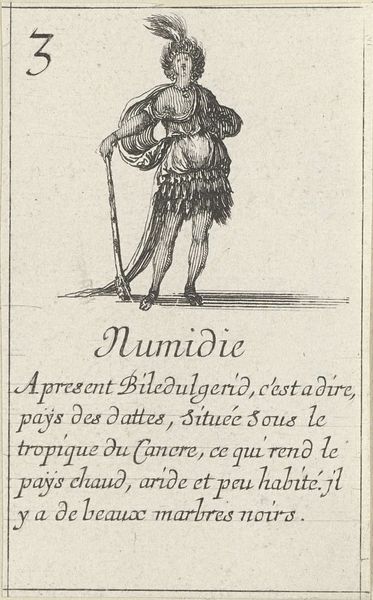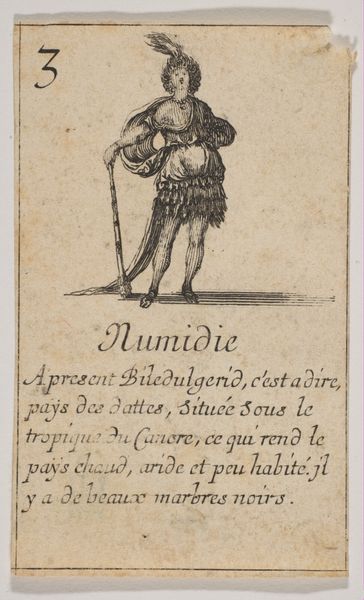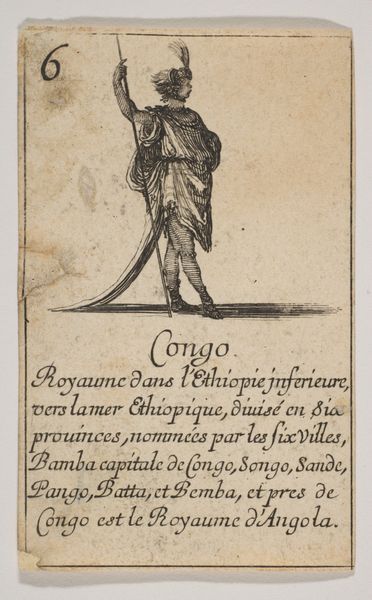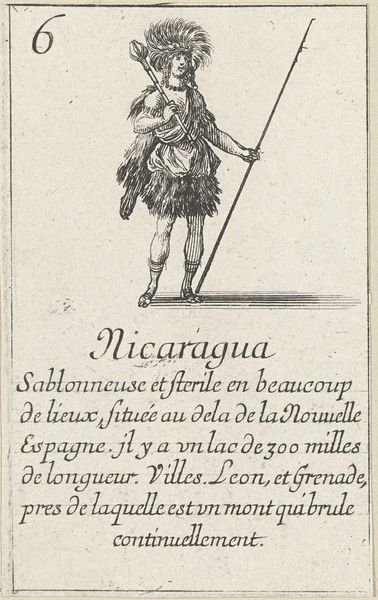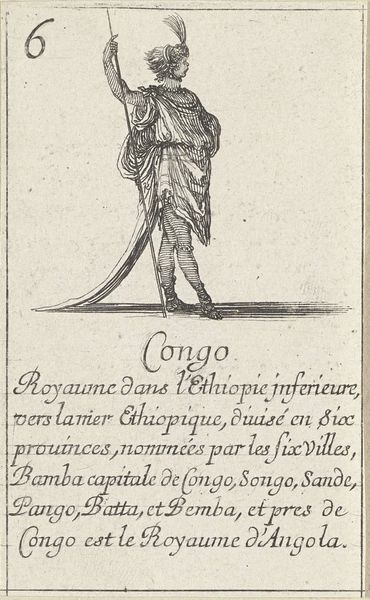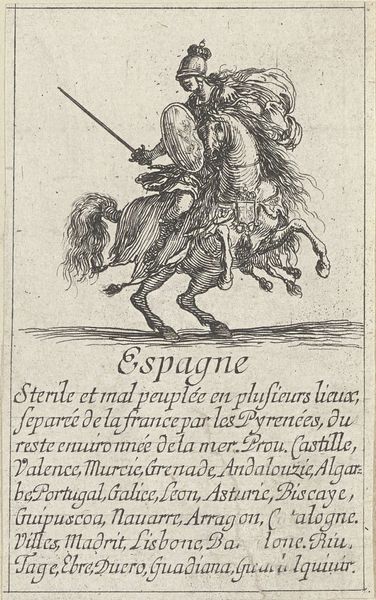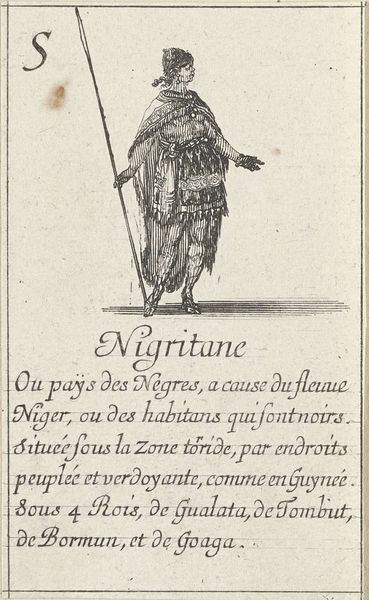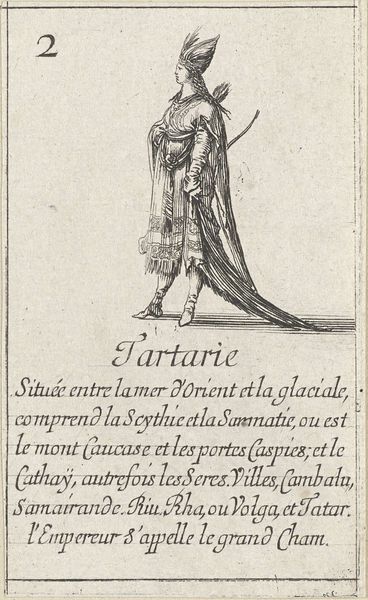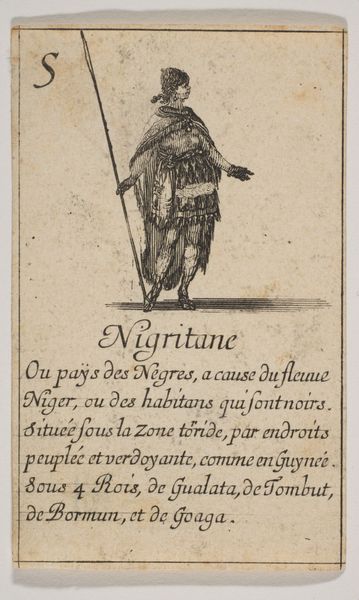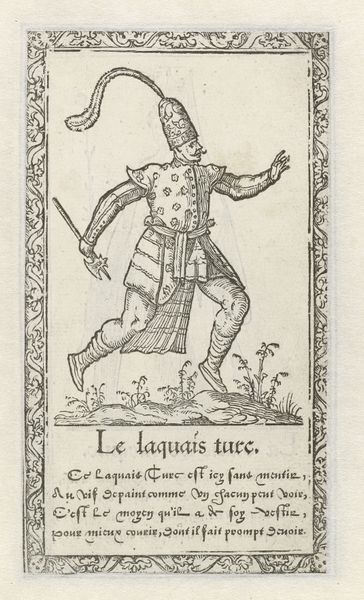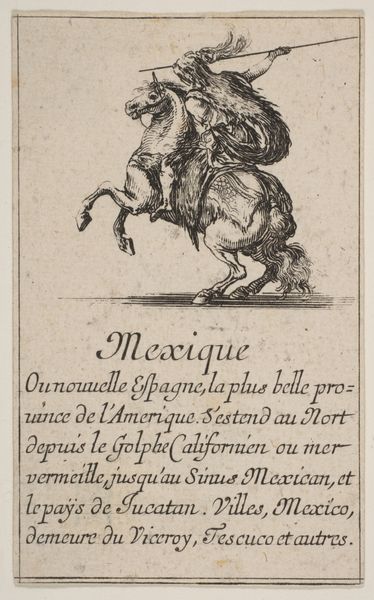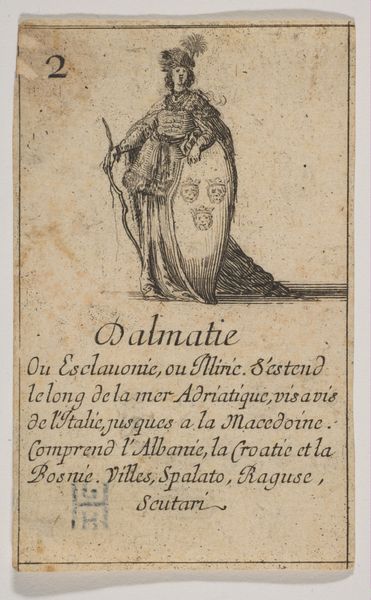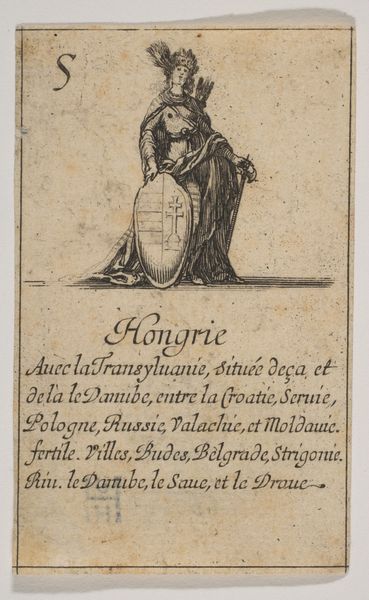
Quivira, from the playing cards "Jeu de la Géographie" 1644
0:00
0:00
print, etching
#
baroque
# print
#
etching
Dimensions: Sheet: 3 1/2 × 2 3/16 in. (8.9 × 5.5 cm)
Copyright: Public Domain
Curator: This is “Quivira, from the playing cards ‘Jeu de la Géographie’” crafted by Stefano della Bella around 1644, now residing at the Metropolitan Museum of Art. It employs etching and engraving. Quite fascinating, wouldn't you agree? Editor: My first impression is stark simplicity; a solitary figure etched onto a card. It feels almost like a placeholder, a suggestion more than a detailed representation. Curator: The "card" element places it within a specific historical context—European exploration and mapping. Quivira, in this case, functions less as a literal depiction and more as a symbolic marker of a "New Albion", hinting at early colonial perspectives and fantasies surrounding the Americas. Editor: Agreed. The lines are quite linear; notice the repeated marks to simulate textures on the attire of the represented figure and his feathered headgear, seemingly important markers to characterize him in some specific ways. It reads more like an idea being catalogued than a celebration of any artistry. Curator: Exactly. And look at the spear. This is less a portrait and more an attempt to capture what European explorers "saw" or expected to see. The spear becomes a signifier of "Indianness", loaded with perceived notions of indigenous life and warfare. The circular object in the center is likely of great spiritual and or symbolic value for him. Editor: And note how isolated the figure appears. The blank space surrounding him seems almost oppressive, it conveys no connection to the land being claimed; the backdrop offers no clues—he just simply *exists.* This visual isolation contributes to the perception of "otherness" the explorers aimed for. Curator: Precisely! The text underneath is very revealing. It promises a "temperate and fertile" New Albion. And California too! It highlights the lure of this unknown land – a strategic tool for cultural memory, blending geographical knowledge with colonizing aspiration. Editor: Thinking about the form as part of a deck of cards also suggests something. Each card builds part of a narrative that could inform and entertain. This representation acts like a single block in an incomplete map. Curator: An incomplete and biased map. I find myself thinking of the real Quivira, and all of the violence erased from this deceptively simple etching. Editor: I see the power in this economy of line—it serves to distill an age, and ideology, into a single graphic space. Curator: Yes. A powerful tool revealing its era’s aspirations—and misapprehensions. Editor: Indeed. And, hopefully, prompts further exploration of its implications for us today.
Comments
No comments
Be the first to comment and join the conversation on the ultimate creative platform.
